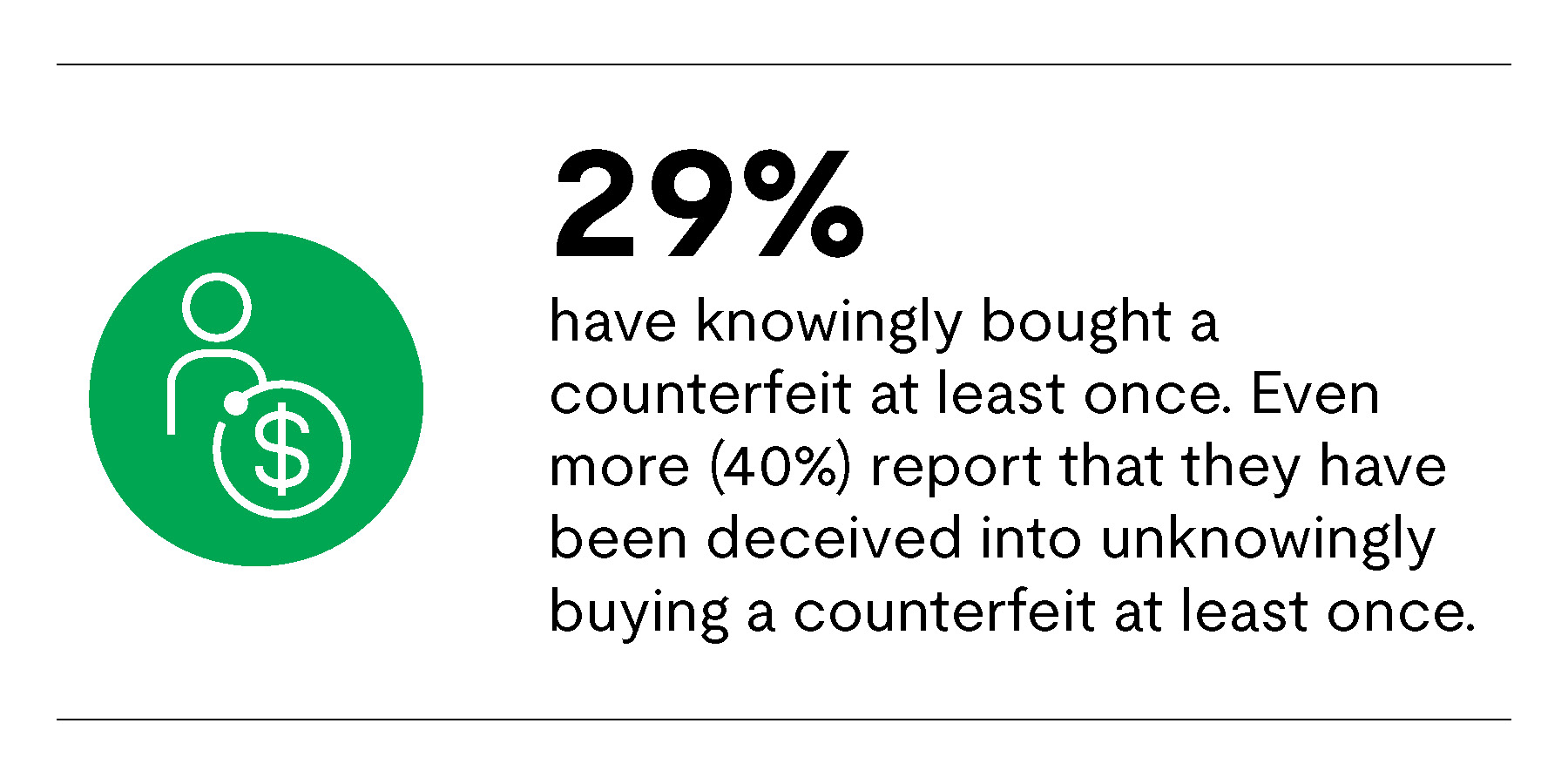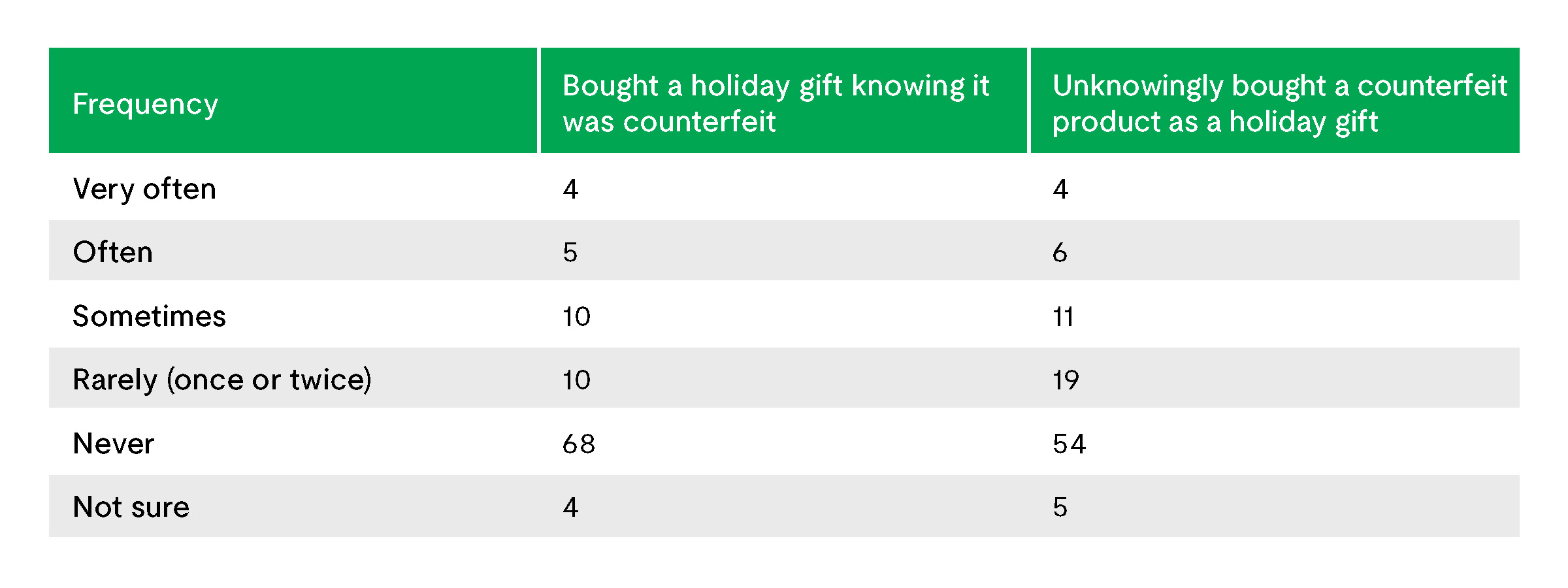Holiday Fakes Have Real Consequences

Reprinted from our 2024 Holiday Safety Guide
When people think of counterfeit items, they mostly think of accessories and apparel. Our survey showed that of holiday gift buyers who had intentionally purchased a counterfeit product, 59% of them had bought apparel or accessories. While buyers may be aware they are not getting a genuine designer handbag for $20, they may have a harder time distinguishing, for example, a counterfeit lithium-ion battery from the original manufacturer item.
A faulty battery carries more injury risk than a fake purse. Although only 10% of holiday shoppers who admit to knowingly and unknowingly purchasing a counterfeit reported buying fake lithium-ion batteries, that translates to many substandard products posing a risk to recipients.

Given that counterfeits intentionally deceive, a majority (54%) of holiday shoppers are confident that they’ve never fallen victim; however a 2023 study by Michigan State University’s Center for Anti-Counterfeiting and Product Protection found that 68% of U.S. consumers had been fooled into buying a counterfeit in the last year alone.
Three-quarters (75%) of holiday shoppers agreed they would take extra precautions to avoid buying counterfeit products and 73% plan to research product authenticity before purchasing, yet a concerning minority still say they plan to intentionally purchase counterfeit goods (14%) or will consider counterfeit goods if authentic versions are too expensive (18%) when buying gifts this year. Those minority percentages, however, translate to approximately 24 million people who plan to intentionally purchase counterfeit goods, and approximately 31 million people who will consider counterfeits if the real deal is too expensive.
The true price of counterfeits can be much costlier than the item itself. While most holiday gift givers surveyed prioritized low price (49%) over brand name or reputation (44%), it is important to make sure a great deal is not actually a counterfeit scam. Fake goods mortgage our safety, resulting in more than 70 deaths and 350,000 serious injuries annually.
This holiday season, take the time to ensure the gifts you give are certified to applicable safety standards by looking for the mark of an independent, third-party testing laboratory such as UL Solutions, Intertek, CSA Group, and others.
